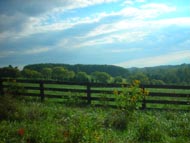Abstract
Artificial light at night (ALAN) has been shown to alter aspects of plant growth, but we are not aware of any studies that have examined whether the effects of ALAN on plants depend upon the backdrop of variation in other abiotic factors that plants encounter in field populations. We conducted a field experiment to investigate whether ALAN affects the growth and anti-herbivore defenses of common milkweed, Asclepias syriaca, and whether the effects of ALAN are influenced by plant density or soil moisture content. Artificial light at night, soil moisture, and plant density were manipulated according to a split-plot factorial design. Although increasing soil moisture by watering had no significant effects on latex exudation, attributes of plant growth generally responded positively to watering. The basal stem diameter (BSD) and height of plants were affected by ALAN × soil moisture interactions. For both of these variables, the positive effects of ALAN were greater for plants that were not watered than for plants that were. Basal stem diameter was also affected by an ALAN × plant density interaction, and the positive effect of ALAN on BSD was greater in the low-density treatment than in the high-density treatment. Our results demonstrate that the effects of ALAN on plant growth can be altered by soil moisture and plant density. Consequently, the effects of ALAN on plants in nature may not be consistent with existing frameworks that do not account for critical abiotic variables such as water availability or biotic interactions between plants such as competition.
